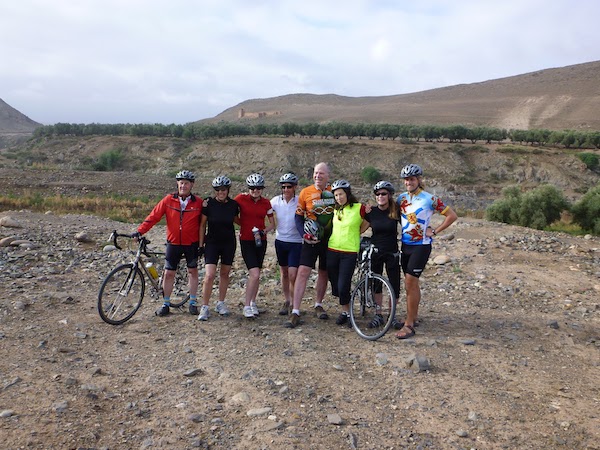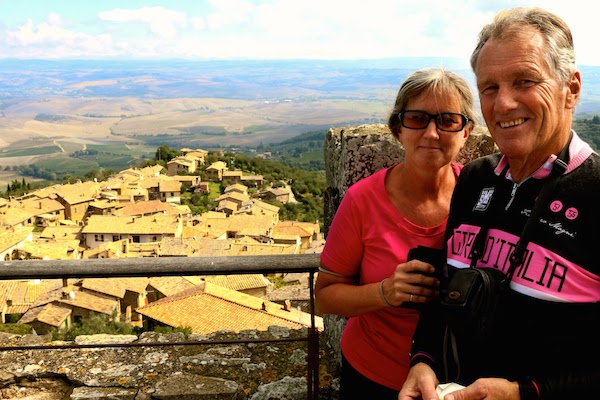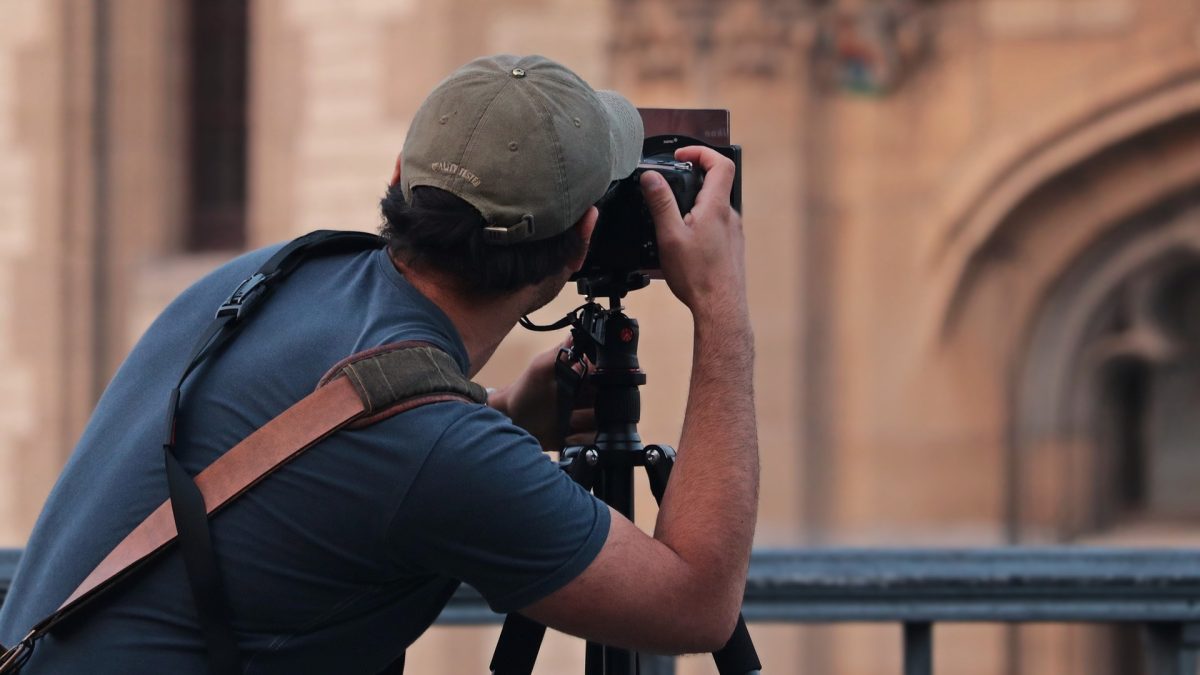
Common Mistakes Made on Group Tours ft. Zipline Canopy Tours by South Park
September 19, 2021
How to Outsource as a Tour Company
October 3, 2021Guide Photography: Taking Pictures as a Tour Leader
A great tour leader works to create memorable experiences and puts in the extra effort to make sure their guests have a great time. Being in the service industry – we should always be on the lookout for new ways to be helpful and supportive. That’s why in today’s video we’re going to have a look at guide photography and tactics for taking great pictures of our customers.
As tour leaders we need to recognize that we are living in a golden age of photography. Never in human history have so many people had personal cameras, in one form or another, and used them so frequently.
According to Business Insider and InfoTrends, the world’s population captured a hundred billion more photos in 2017 than they did in 2016. As seen in the chart below from Statista— using InfoTrends’ data — with most of these photos taken on smartphones.
As tour leaders, we should expect the number of photos and videos taken on our tours to continue to rise.
If you are creating a truly remarkable experience – people will want to capture it through photos and videos. By understanding that this is a priority for our guests, we can seize the opportunity to be helpful.
By educating ourselves on the basics of photography, employing a few best practices and avoiding the most common pitfalls – we can dramatically elevate the quality of the images we capture.
So when a guest inevitably hands you their camera and asks for a photo – you can now wow and delight them in an entirely new way.
In this video, we’ll look at 10 tips to take better pictures as a tour leader. We’ll address some common mistakes, such as taking pictures of your guests from too far away, making poor lighting choices, having an overly distracting background, etc.
Because smartphone cameras are rapidly changing the way our guests take pictures, we’ve also created a bonus PDF for you. In ‘Secrets to Spectacular Smartphone Photography – The Tour Guide’s Handbook’ we’ll share some of the hidden features of smartphone cameras and share our best smartphone tricks for creating memorable images.
Over the course of our 10 guide photography tips, we’ll look at real-world examples of pictures taken on tour and discuss how they might have been improved.
As a quick example, have a look at the picture of the tour group below:

The framing isn’t ideal, we can’t really make out the faces of the people in the shot, nor do we get a great sense of where the photo is taken.
Contrast this with the two photos below. Notice how we’ve solved some of the above problems and captured an image that is more worthy of being framed, shared or used as a photo album cover.

While photography is an art form – and rules should be broken from time to time – there are some guidelines and ‘rules of thumb’ that will instantly improve your photos.
With this video and PDF, you’ll not only be able to take great pictures FOR your guests, you’ll also be able to pass on what you’ve learned to your customers.
In my experience, guests are thrilled to learn new things about their camera and appreciate this kind of help. Showing someone how to use burst mode, adjust their image exposure or do a vertical panorama on their phone is great customer service.
Happy snapping and if you’re inspired, share this video with your friends and colleagues!
Great to have you here,
Kelsey T

Finished Watching?
What advice would you share for taking great pictures on tour? Let us know in the comments below!
Transcript:
Hi there. Kelsey Tonner here from Be a Better Guide. Today, we’re sharing ten tips on how to take better pictures of your guests. I’m talking about those mental worthy, authentic feeling, best photos of the entire vacation kind of pictures because, let’s face it, you’ve taken a lot of bad pictures of your guests over the years just like me, like this one, or this one, or maybe even something like these.
Well, my friends, because we are always thriving to be the best tour leader we can be, let’s talk about how we can up our game when taking pictures for our guests.
Tip number one: check and clean the camera lens. Before taking any pictures, look at that lens to see if there’s humidity, dirt, dust, fingerprints, or even half-chewed pieces of candy. All of these are going to have an impact with the quality of your photo.
Especially since so many people these days are taking photos with their phones, check and wipe the lens with a clean microfiber cloth as needed. The cloth used for your sunglasses or reading glasses will work perfectly; and for our phone lens, a quick wipe with the clean part of your shirt will usually suffice.
Two: get closer to your guests. People are almost always the subject in our photographs who are often taking pictures that are too far back. People want to be able to see their smiling faces, so fill the frame with their head and upper body.
Don’t worry about capturing their knees, legs and toes. Usually, this means capturing less of the background and trying not to squeeze everything into the frame. Try a unique angle and move around, but remember that the guests are the main subjects in your photos.
Three: avoid digital zoom. Zooming in a smartphone almost always means a loss in quality as with any type of digital zoom. Also, when you’re zooming in on other types of camera, you increase the chance of motion blur and camera shake.
There are many exceptions especially with high quality lenses. You have legs and a movable body for a reason. Simply move closer to adjust your frame. Squat down, stand in something elevated, move around and ditch the zoom.
Four: keep the horizon level. Nothing ruins a great photo faster than a crooked horizon. Aside from artistic shots, the human brain almost always prefers a flat horizon. You can use a camera’s grid function to level things up; but most times, a quick horizon check before pushing the shutter will suffice.
Five: ensure people are in focus. The only thing more irritating than a crooked horizon is a blurry image. When you’re using a smartphone, be sure to tap the screen on the area you want to focus your image.
You can even lock the focus by pressing and holding that area for a couple of seconds, then readjust the frame as needed. Where should you focus? Directly on the eyes of your guests. Autofocus has improved substantially in almost all cameras, but always have a quick look in camera to make sure your guests are in focus.
Six: think about light. The best photographers in the world know that light is one of the most important variables when it comes to photography. Here’s some quick wins when it comes to light. Take photos of guests during the golden hours of the day.
These are the hours shortly after sunrise or before sunset where daylight is redder and softer and makes for beautiful photos. When shooting portraits, avoid sunny and direct light on faces whenever possible, which can create harsh shadows and a lot of squinting.
Putting the sun behind your guests isn’t a great idea either because it will darken their faces into silhouettes or the background will be white and overexposed. Do what you can with what you’re given, but don’t forget that overcast and cloudy days make for great photos.
Seven: shoot simple and uncluttered compositions. Framing compositions are part of what sets amazing photos apart from the rest. Now, it is an art form, but there are some guidelines that can get you pretty far. Remove all clutter from your photos and eliminate distracting elements in the background.
Move your body, the camera or even your guests to simplify what you see through the lens. Use the rule of thirds to mentally divide up your image using two horizontal lines and two vertical lines as seen here.
Then, position the important elements in your scene along those lines or at the points where they meet. In taking photos of people, place your subject’s eyes at the intersection of these lines to give the shot a clear focal point.
Eight: make people laugh. After taking a few pose photos, try a few jokes and get your guests to chuckle. When people are genuinely laughing, their smile takes on a more authentic quality. It will make your photos feel less static.
Try to take candid photos of you guests when they’re not posing and they don’t really know they’re being photographed. If you get some good ones, offer to send them by email. These could easily become trip favorites.
Nine: get to know great spots to take pictures. If you’re returning to the same spot over and over, then it is well worth your time to find the perfect spots to take pictures. For inspiration, have a look at postcards, Instagram or do a Google image search of the sites you visit.
What locations, angles or poses can you recreate with your guests?
Ten: shoot loads of photos. One of the best parts of the digital camera revolution is that we don’t have to worry about wasting film. Always snap at least six to ten images of your guests, trying different angles, ideas and especially after cracking you best jokes. If you’re only taking two to three photos with your guests’ camera, you’re reducing your chances of capturing that perfect moment.
As a quick review, check and clean the camera lens, get closer to your guests, avoid digital zoom, keep the horizon level, ensure people are in focus, think about light, shoot simple and uncluttered compositions, make people laugh, get to know great spots to take pictures and shoot loads of photos.
As an extra bonus, we have put together a special PDF guide to help you take better photos with your smartphone. It’s called Secrets to Spectacular Smartphone Photography: The Tour Guide’s Handbook. Inside, we’re going to show you some of the hidden features of your smartphone camera, plus I’ll share six of my favorite techniques for using a smartphone to capture memorable images.
Having this ability to coach and teach your guests on how to use their smartphone camera better is a great customer service. You can grab that PDF with the link below. If you enjoyed this video, please feel free to pass it on, sharing with your network is always appreciated.
Before you go, in the comments, let me know what advice you have for capturing great pictures with your guests. As always, thanks for being here and we’ll see you next time.
Okay. Let’s conclude with a humorous look at what tech companies think the elderly look like when they’re using their new smartphones. All right, Nana. You go, girl. I just love how simple it all is. We love tiny new technology; the smaller the screen, the better. Now, a little taste of reality.

